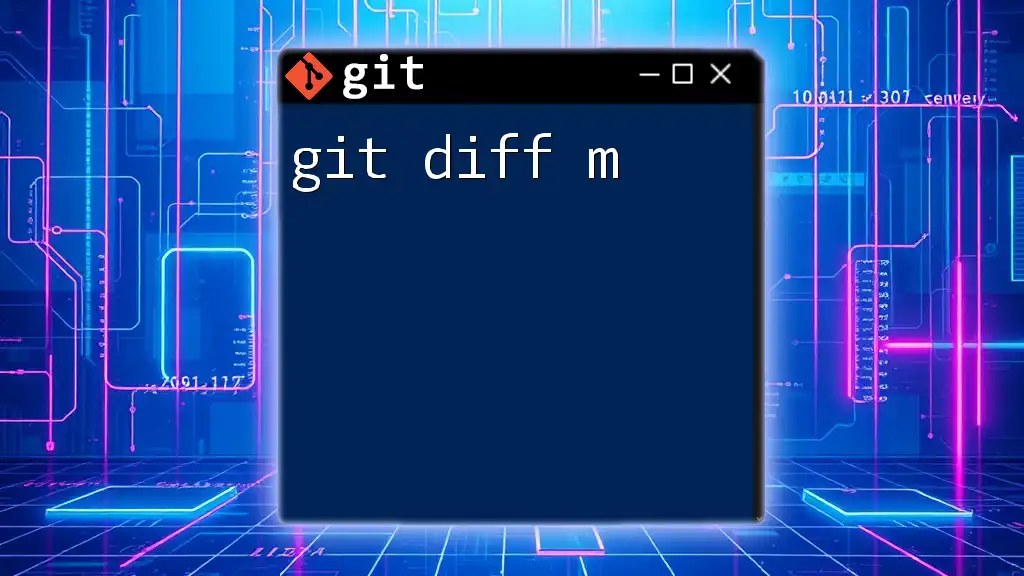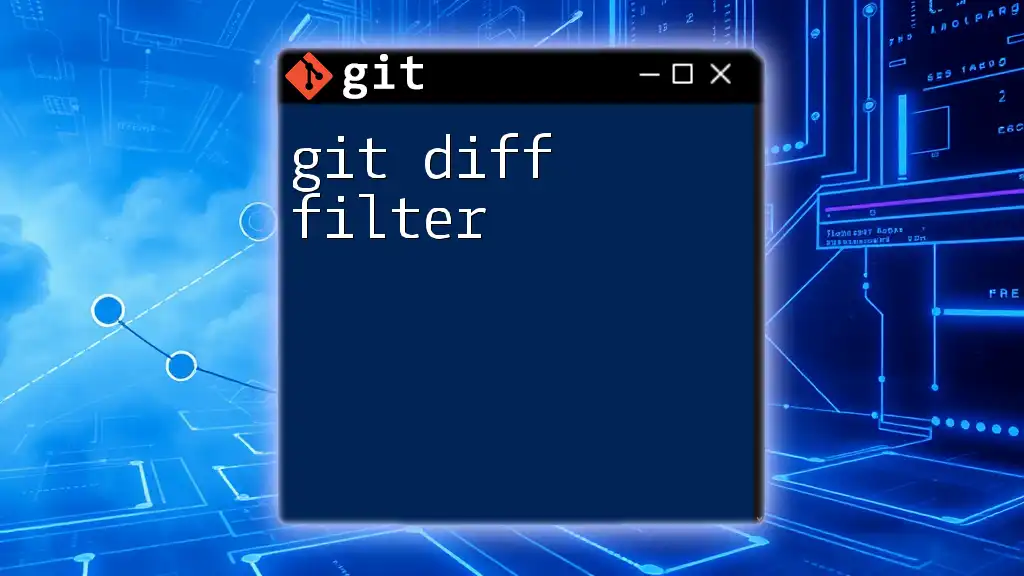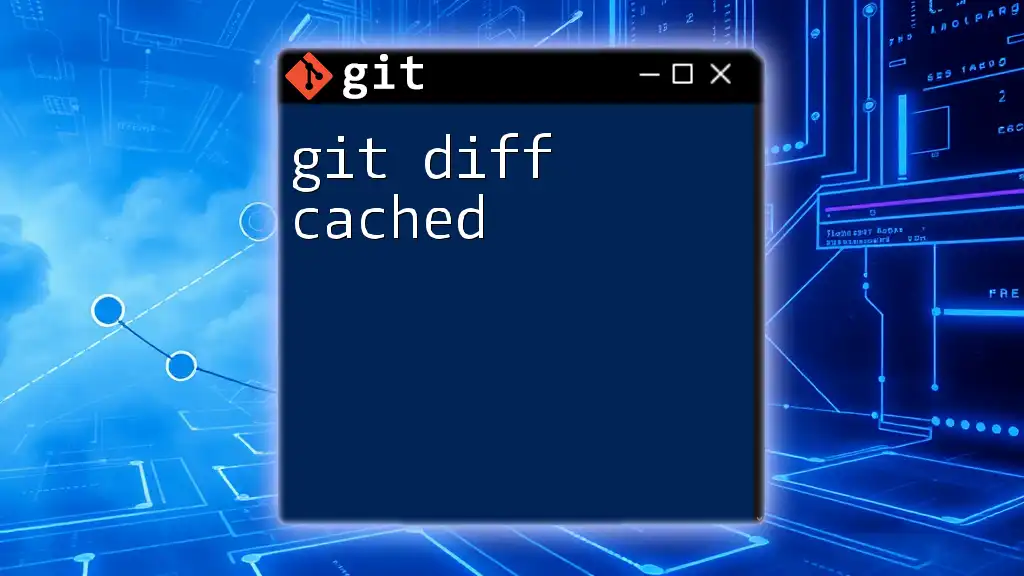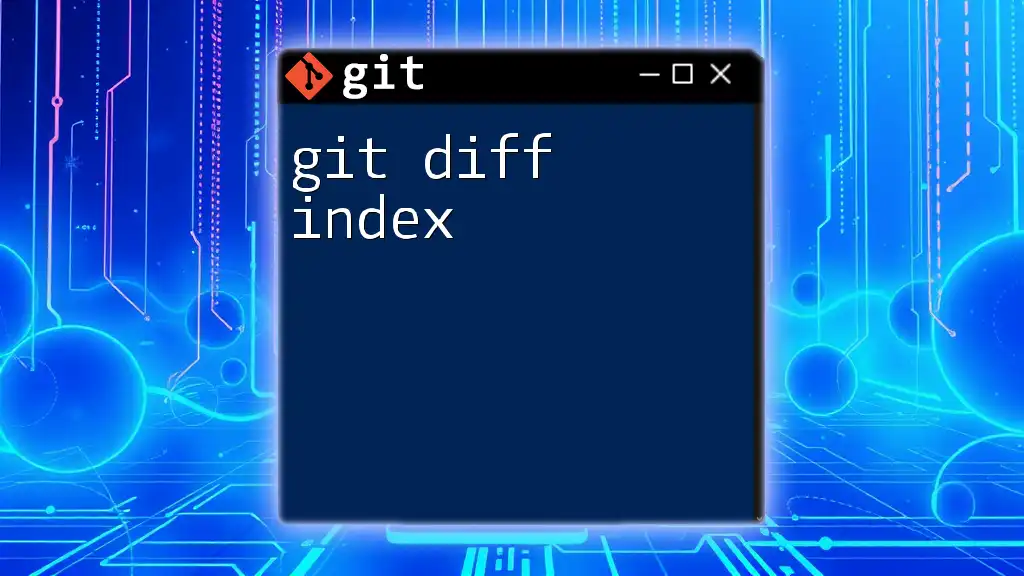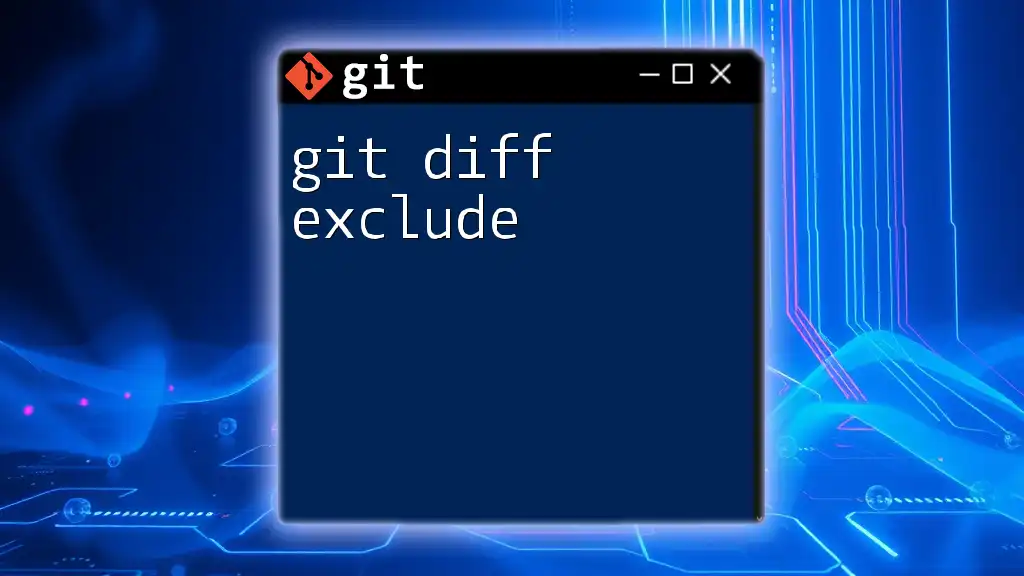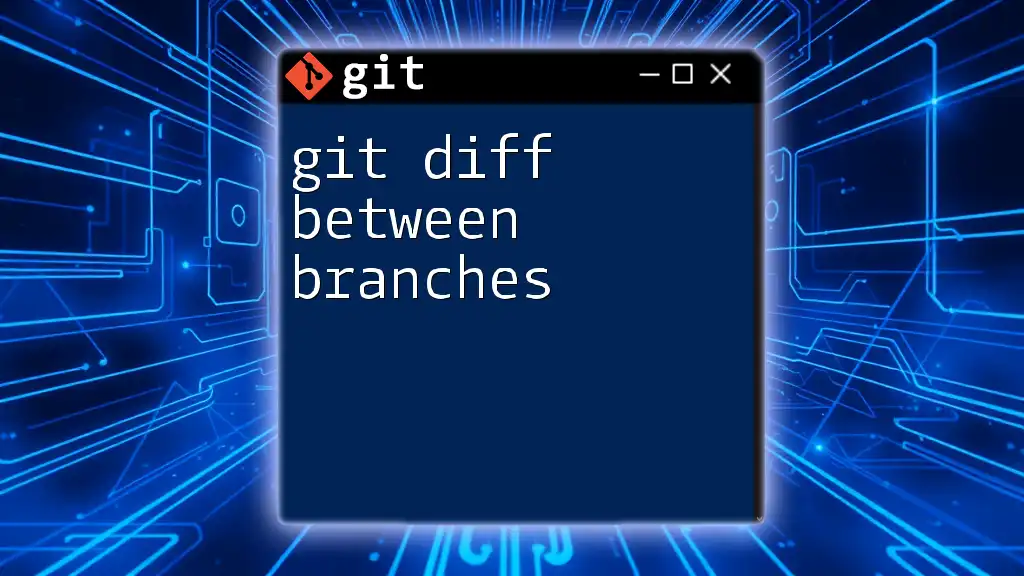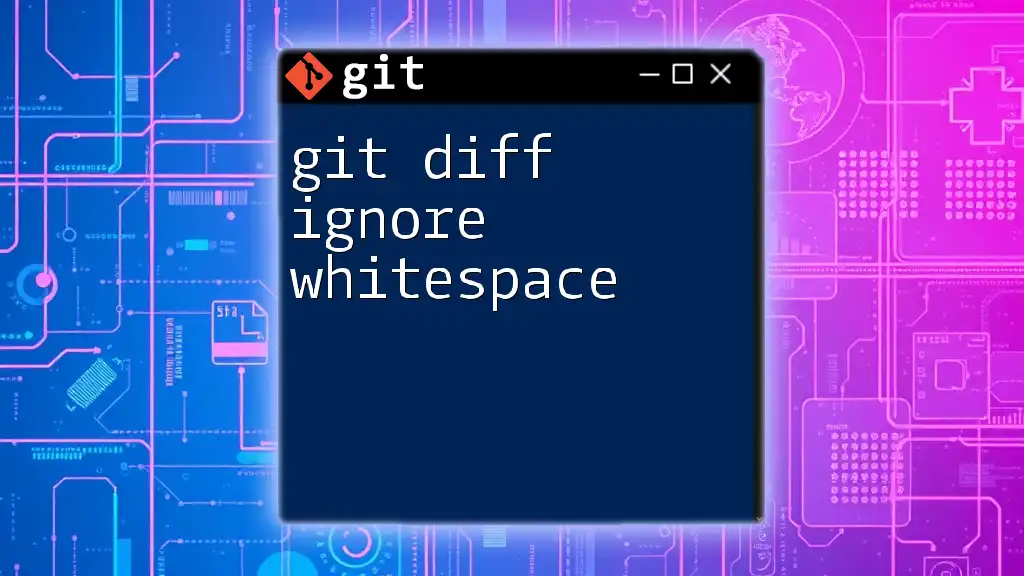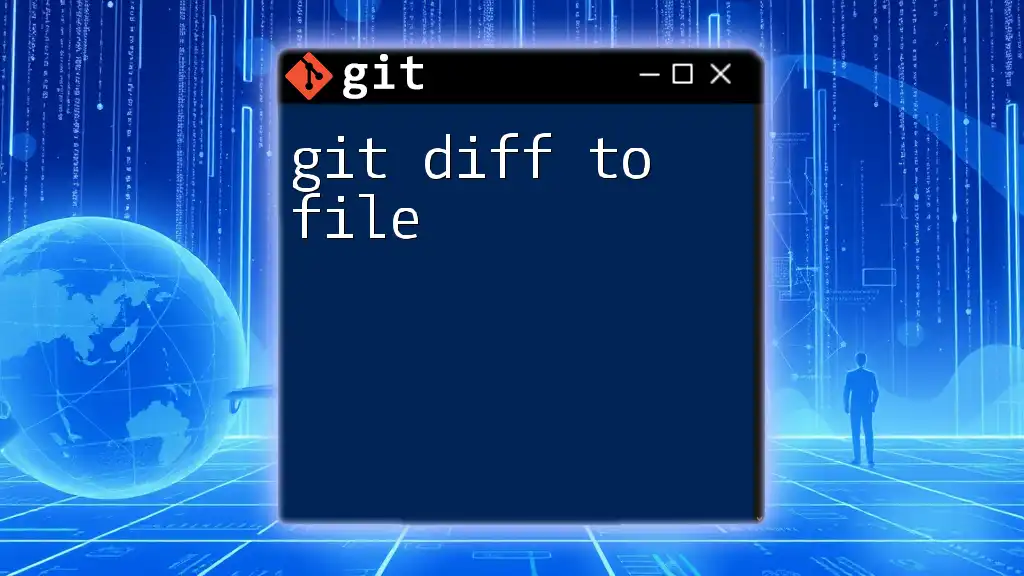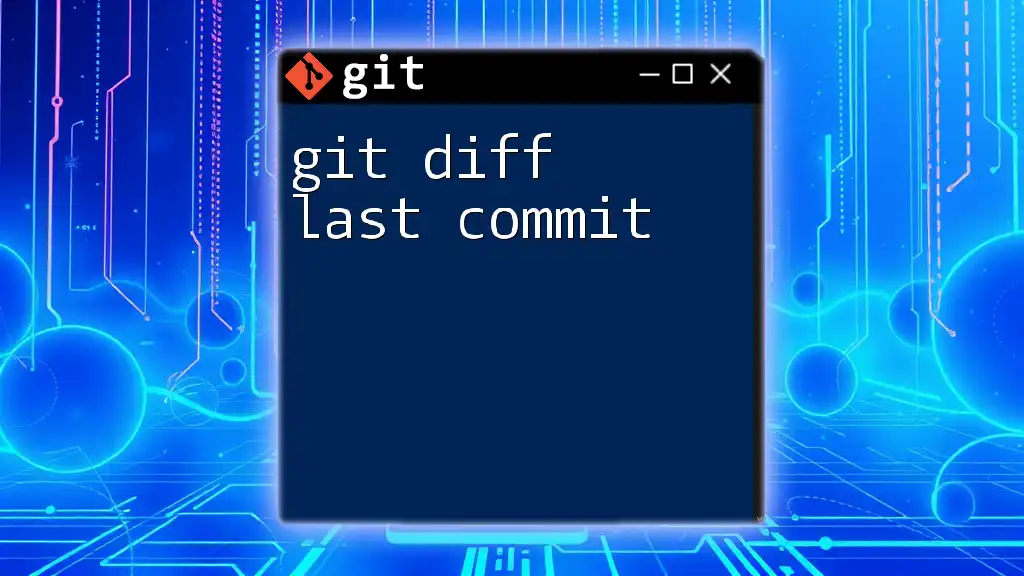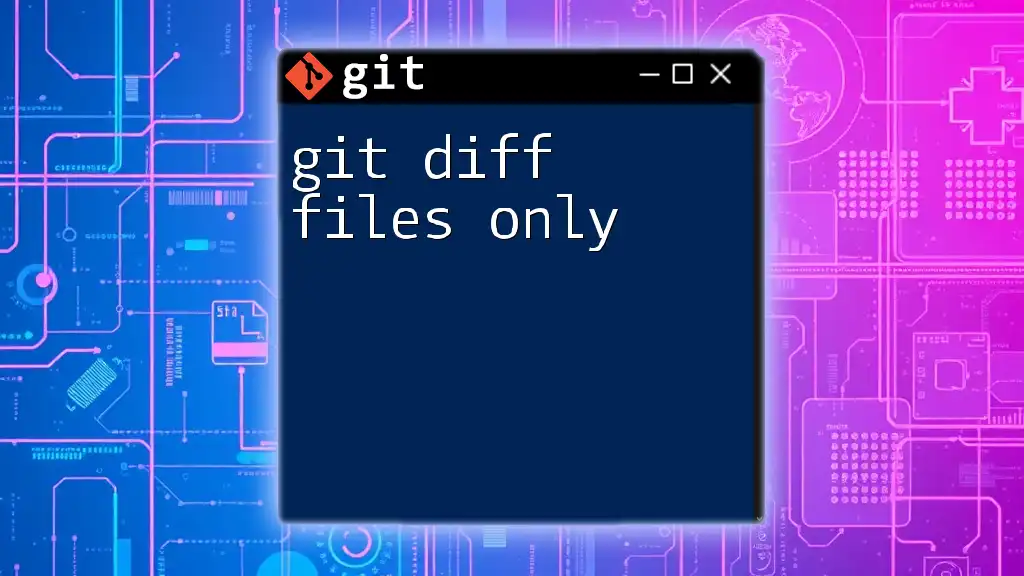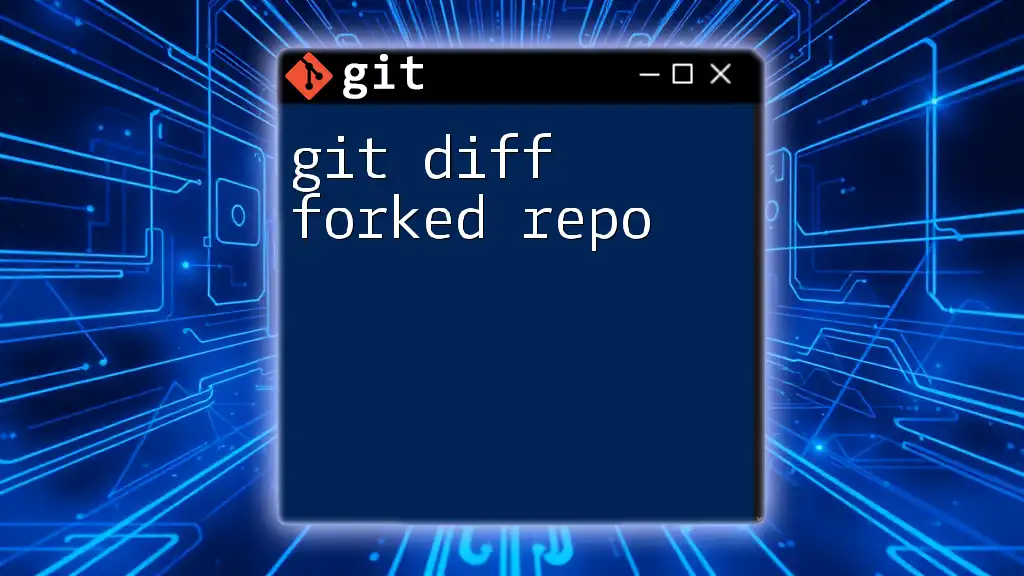The command `git diff -m` is used to show the differences between the current state of the working directory and the last commit that was made to the repository, highlighting any changes made to files in a concise format.
git diff -m
What is `git diff -m`?
`git diff` is a vital tool in Git that helps developers understand changes made to files in a repository. When paired with the `-m` option, it becomes even more powerful by allowing users to compare changes in a more focused manner. Specifically, the `-m` option refers to modifications made to files, making it particularly useful in identifying which parts of files have been modified versus those that have been added or deleted.
The use cases for `git diff -m` can span a range of scenarios, from troubleshooting to preparing code for review. Understanding how to utilize this command effectively can significantly streamline your workflow in Git.
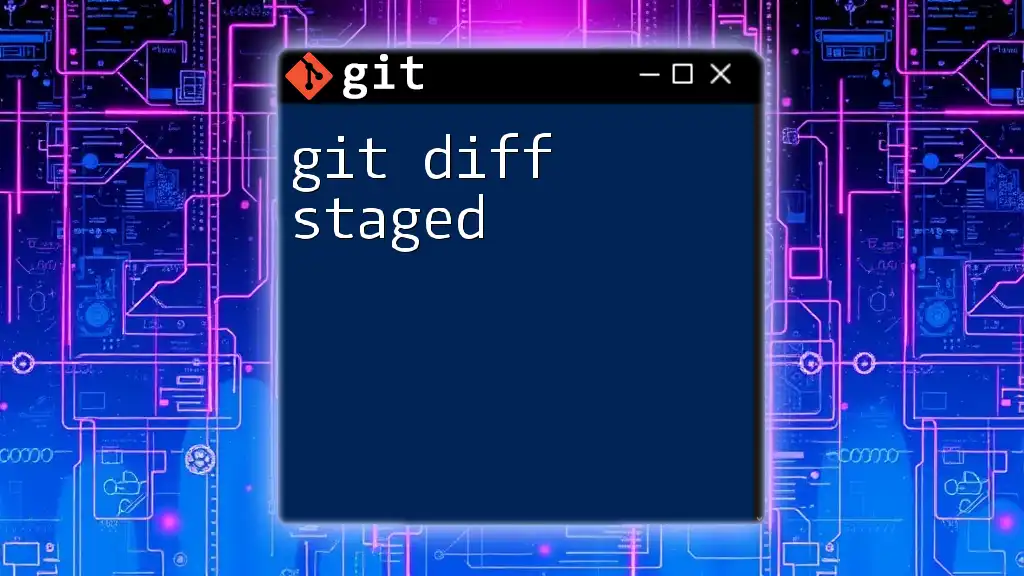
Key Concepts of `git diff`
What is a Diff?
A diff is a way of comparing two versions of the same file or set of files to highlight changes made between them. These differences include changes such as:
- Additions: New lines or files that were introduced.
- Deletions: Lines or files that were removed.
- Modifications: Existing lines or files that were altered.
By understanding what a diff is, you can make more informed decisions about your code and collaborate better with your team.
How `git diff` Works
The `git diff` command compares the contents of your working directory against other states in your repository. The output is designed to show what changes have been made in a clear and manageable format. You can expect to see:
- Raw diff: The unformatted output displaying all changes.
- Context diff: A more human-readable output presenting the changes alongside unchanged lines for better context.
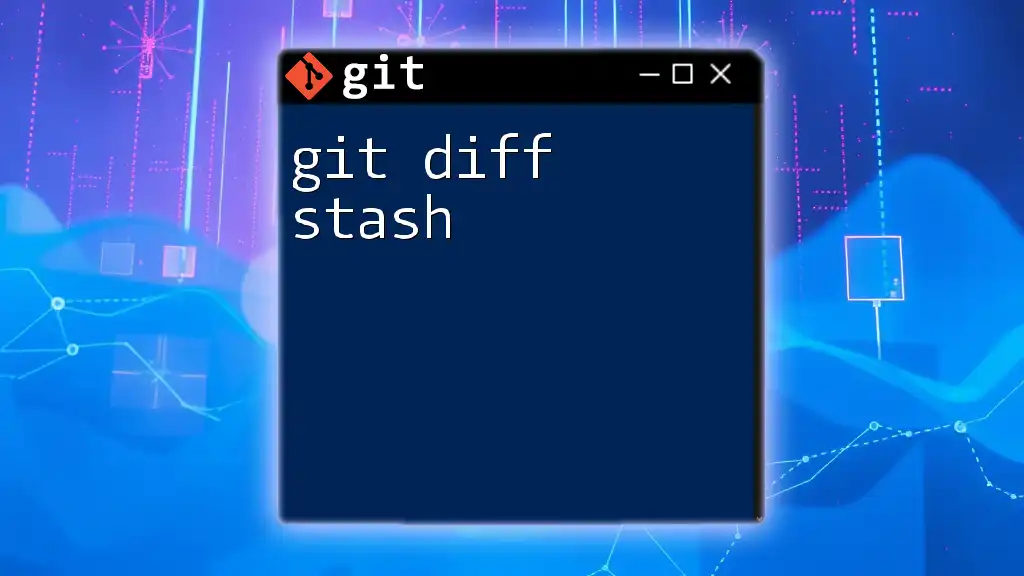
Analyzing the `-m` Option
Understanding the `-m` Flag
The `-m` flag in `git diff` helps differentiate between files and their modifications. Specifically, it instructs Git to show a diff that highlights changes made only to modified files, effectively filtering out any additional changes that aren't related to the modifications.
When to Use `git diff -m`
You should consider using `git diff -m` in several practical scenarios, such as when you want to:
- Quickly assess the impact of your changes before staging them for a commit.
- Prepare a code review, allowing reviewers to see what has been modified without the noise of added or deleted files.
- Identify areas of conflict and resolve them effectively during merges.
By using `git diff -m`, you can streamline your development process and maintain code quality.
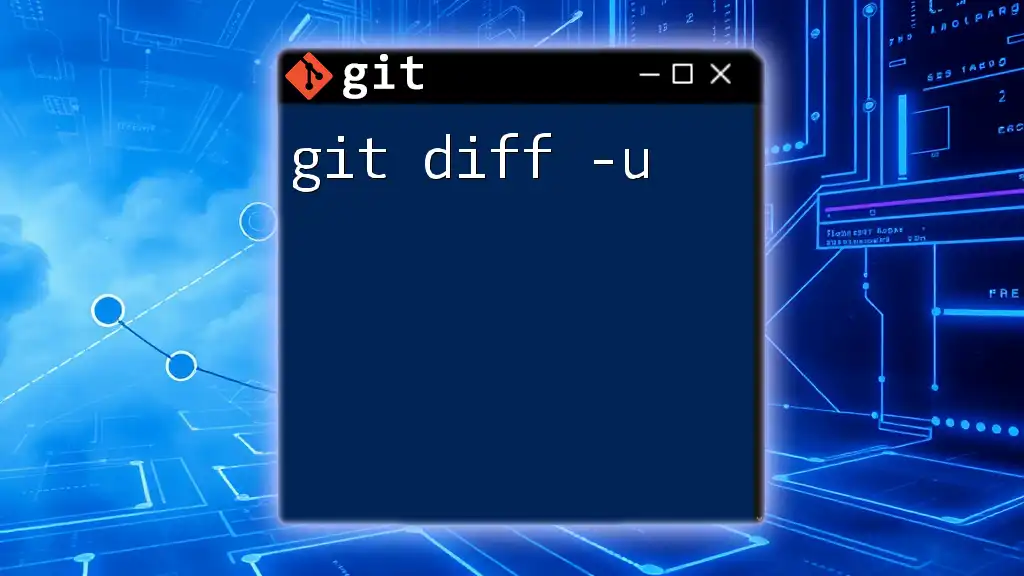
How to Use `git diff -m`
Basic Syntax
The basic syntax of the `git diff -m` command enables flexibility in how you view changes. The structure is as follows:
git diff -m [options] [<commit>]
Example Use Cases
Example 1: Viewing Changes in a Specific File
You can assess the changes made in specific files, which is valuable when you are working on multiple features simultaneously. Consider a scenario where you've modified `file.txt`:
git diff -m HEAD -- path/to/file.txt
This command provides the differences in `file.txt` compared to the last commit, allowing you to see precisely what has changed.
Example 2: Comparing the Working Directory with the Index
To identify unstaged changes in your working directory, simply run:
git diff -m
This command will display all modified files, giving you a clear picture of what has changed since your last commit.
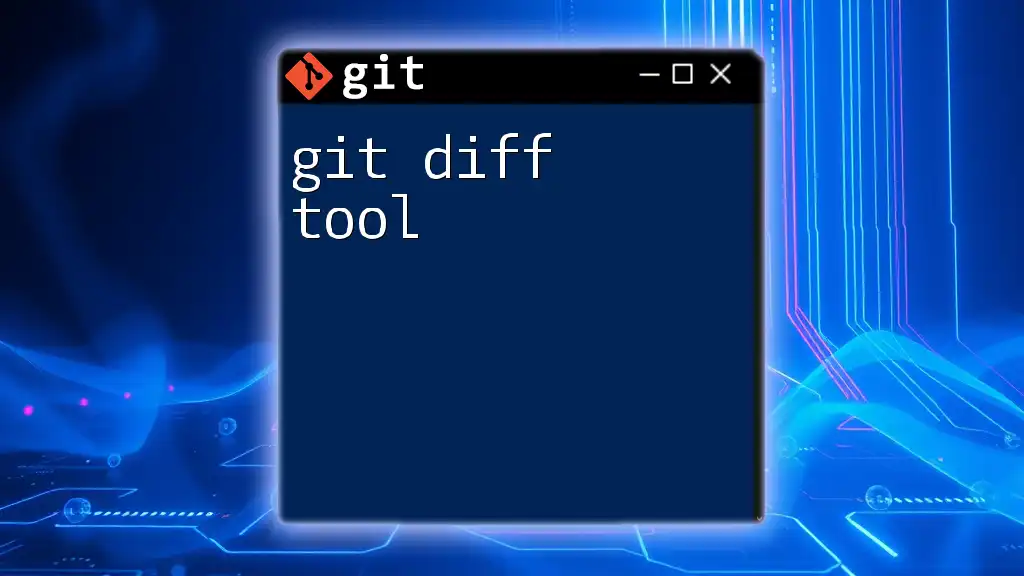
Interpreting the Output
Understanding the Output Format
The output of `git diff -m` can be broken down into several components:
- Added lines: Marked with a `+`, indicating new content that has been introduced.
- Deleted lines: Marked with a `-`, showing what content has been removed.
- Modified context lines: These serve as context to what has been changed, helping to make the output more understandable.
Practical Tips for Reading the Output
To read the output efficiently, pay attention to the visual cues. The `+` and `-` signs allow you to quickly identify where changes have occurred. Furthermore, look for larger blocks of modified context to help you grasp the significance of the changes made.
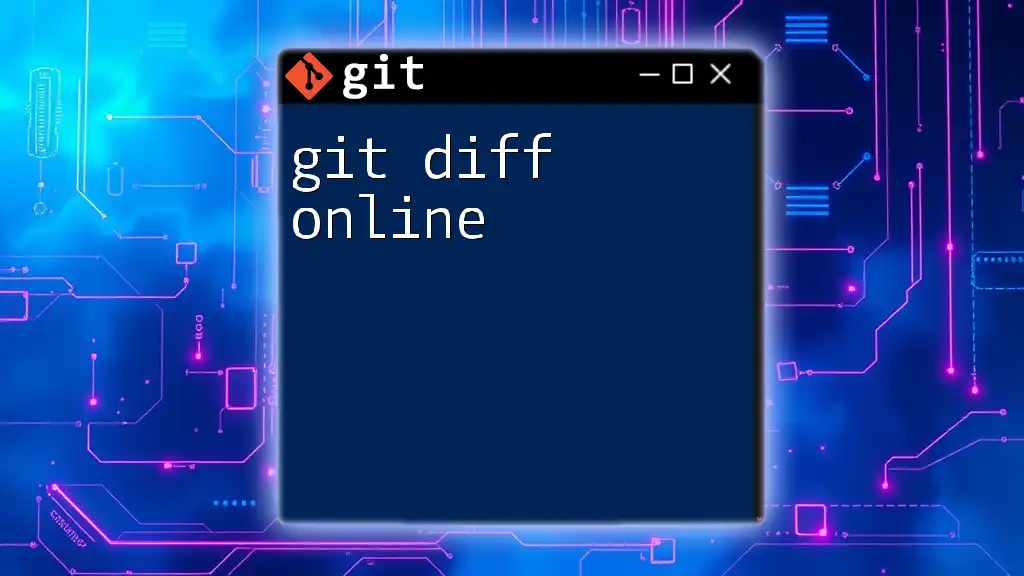
Common Issues and Troubleshooting
Error Messages
While using `git diff -m`, you may encounter common errors:
- No changes added to commit: Make sure there are actually changes present in the files you're comparing.
- File not found: Confirm that you are querying the correct path to the file or directory.
Best Practices
To ensure efficient use of `git diff -m`:
- Regularly review your changes using `git diff -m` before making a commit to minimize noise in your diffs.
- Combine it with other git commands to enhance your work, like `git status` and `git log`. This holistic approach gives you a comprehensive view of your repository's state.
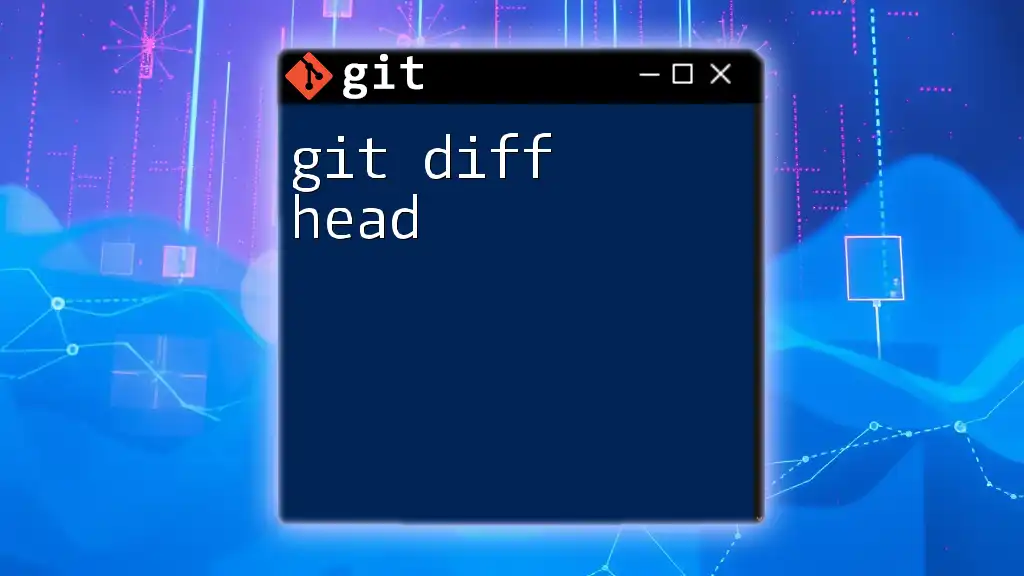
Conclusion
Understanding and using `git diff -m` is a vital skill for anyone working with Git. It allows you to easily see modifications, helping to ensure code quality and integrity during development. By practicing with this command and familiarizing yourself with its output, you'll foster a smoother development cycle and create more maintainable code.
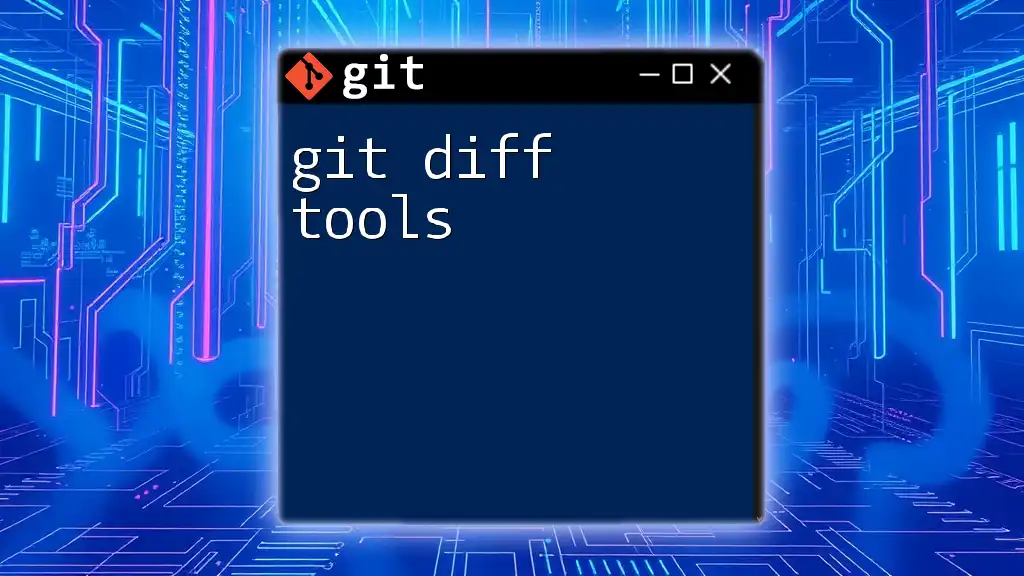
Additional Resources
For further learning about Git and its commands, consider exploring the official Git documentation or additional resources that offer tutorials, tips, and best practices. Becoming proficient with `git diff -m` and similar commands will undoubtedly elevate your programming efficiency and workflow.
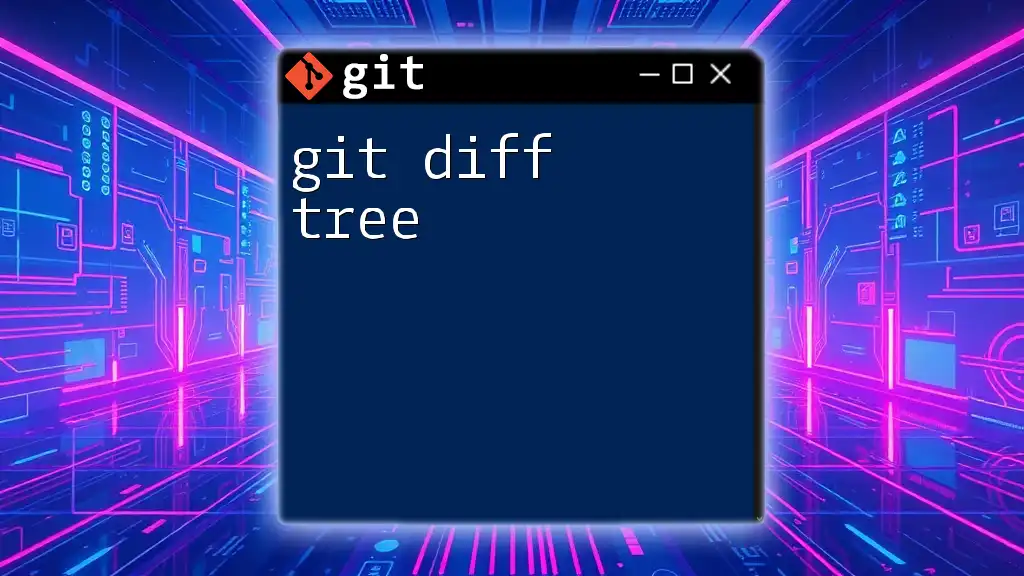
Call to Action
If you found this article helpful, sign up for our newsletter for more Git tips and tricks. Share this article on social media or forums to help others learn about the power of `git diff -m`.

